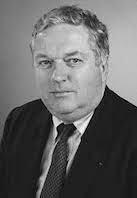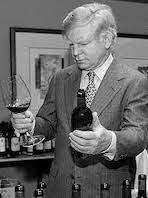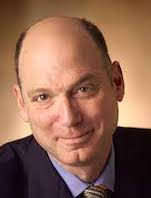The History of Wine Influencers — Part 2
 This is part two of my investigation (see part 1) into the claim of one Wine Influencer that Wine Influencers have been around forever, but they were different in the past. The public claim was this:
This is part two of my investigation (see part 1) into the claim of one Wine Influencer that Wine Influencers have been around forever, but they were different in the past. The public claim was this:
“The wine Influencer isn’t new – the first ones were old white men without pretty pictures who wrote about wine in inaccessible language meant to stave off the common public- but they got the prestige of ‘critic’.”
Who were these the wine influencers of yore that were so difficult to read and had at the heart of their project a desire to keep the “common public” from getting anywhere near wine and wine writing? Let’s continue to examine this question and these old white men.
FRANK PRIAL
 A reporter and features writer by trade and a veteran of the Korean War, Frank Prial held the post of Wine Writer for the New York times for more than 30 years. When I entered the Wine PR trade in 1990 Mr. Prial called me back a day after I reach out to him for the first time and left a message asking to speak with him about a client. When I picked up his call he said, “You’re new with Gracie (my employer) aren’t you. Don’t make her look bad, I like her.” He was a friendly man with an easy-going way. More importantly, he believed wine was not something to put on a pedestal, not something to idolize. He thought wine writing should be easy to get at and shouldn’t embrace arcane wine language. Prial was 42 when he began writing his wine column for the New York Times. Not old. But he did get old I suppose. And he did have pasty skin. So perhaps he can be written off.
A reporter and features writer by trade and a veteran of the Korean War, Frank Prial held the post of Wine Writer for the New York times for more than 30 years. When I entered the Wine PR trade in 1990 Mr. Prial called me back a day after I reach out to him for the first time and left a message asking to speak with him about a client. When I picked up his call he said, “You’re new with Gracie (my employer) aren’t you. Don’t make her look bad, I like her.” He was a friendly man with an easy-going way. More importantly, he believed wine was not something to put on a pedestal, not something to idolize. He thought wine writing should be easy to get at and shouldn’t embrace arcane wine language. Prial was 42 when he began writing his wine column for the New York Times. Not old. But he did get old I suppose. And he did have pasty skin. So perhaps he can be written off.
JAMES LAUBE
 James Laube was the California wine expert and primary critic/reviewer of California wine for The Wine Spectator for more than two decades beginning in the 1980s. His opinion on a wine generated sales because the readers of the Wine Spectator trusted him and his palate. He vied with Robert Parker as the most influential critic of California wine for years. But of course, he was more than simply a critic. His column in the Spectator was widely read and he took on topics of concern and controversy. His books California Wine, California’s Great Cabernets and California’s Great Chardonnays were bibles and references. However, no one would ever mistake Jim for being anything other than a man…so, he had that going against him.
James Laube was the California wine expert and primary critic/reviewer of California wine for The Wine Spectator for more than two decades beginning in the 1980s. His opinion on a wine generated sales because the readers of the Wine Spectator trusted him and his palate. He vied with Robert Parker as the most influential critic of California wine for years. But of course, he was more than simply a critic. His column in the Spectator was widely read and he took on topics of concern and controversy. His books California Wine, California’s Great Cabernets and California’s Great Chardonnays were bibles and references. However, no one would ever mistake Jim for being anything other than a man…so, he had that going against him.
MICHAEL BROADBENT
 It’s quite possible that no one in the world tasted (and reviewed and wrote about) more great, classic and old wines than Michael Broadbent. Achieving his MW in 1960, Broadbent went on to establish the Christie’s London wine department in 1966 and remained in their employ until 2009. It was from his tens of thousands of wine notes he recorded over the years that led to the publishing of The Great Vintage Wine Book, a tome that will forever serve as a prominent record of wines ranging from the 18th century into the 21st century. He wrote copiously for numerous magazines and newspapers. Michael Broadbent is among the few wine people working over the past two centuries who can legitimately be deemed a legend. However, in some people’s minds he will always be tarred by his white skin.
It’s quite possible that no one in the world tasted (and reviewed and wrote about) more great, classic and old wines than Michael Broadbent. Achieving his MW in 1960, Broadbent went on to establish the Christie’s London wine department in 1966 and remained in their employ until 2009. It was from his tens of thousands of wine notes he recorded over the years that led to the publishing of The Great Vintage Wine Book, a tome that will forever serve as a prominent record of wines ranging from the 18th century into the 21st century. He wrote copiously for numerous magazines and newspapers. Michael Broadbent is among the few wine people working over the past two centuries who can legitimately be deemed a legend. However, in some people’s minds he will always be tarred by his white skin.
ROBERT FINIGAN
 Robert Finigan was among the most trusted and best-read wine critics (and restaurant critic) of the 1970s and 1980s. His Robert Finigan’s Private Guide to Wines newsletter, started in 1971, was perhaps the most influential newsletter well before Robert Parker’s Wine Advocate and other subsequent newsletters hit the scene. I met Finigan only once and he proved to be both charming and attentive to a young man just entering the wine business. The author of a number of wine books and exceedingly well known among avid wine lovers, Finigan was eulogized by Frank Prial in the New York Times upon his death in 2011.
Robert Finigan was among the most trusted and best-read wine critics (and restaurant critic) of the 1970s and 1980s. His Robert Finigan’s Private Guide to Wines newsletter, started in 1971, was perhaps the most influential newsletter well before Robert Parker’s Wine Advocate and other subsequent newsletters hit the scene. I met Finigan only once and he proved to be both charming and attentive to a young man just entering the wine business. The author of a number of wine books and exceedingly well known among avid wine lovers, Finigan was eulogized by Frank Prial in the New York Times upon his death in 2011.
CLIVE COATES
 Clive Coates is another of the great modern English wine writers. Known primarily as a Burgundy specialist, his most famous work is the book Côte d’Or: A Celebration of the Great Wines of Burgundy. Written in 1997 and reaching more than 1,000 pages, it remains a reference today. Coates also founded and published The Vine, a wine magazine/journal that was highly regarded for it serious approach to wine appreciation and tasting. He is also responsible for developing “Coates’ Law of Maturity,” which posits that a wine will remain at its peak drinking level for approximately the same amount of time it took the wine to mature and to get the point of peak drinking. With this and his focus on the principles of tasting he rendered in his many books, he is responsible for teaching thousands of wine lovers how to taste wine in a technical manner. But, the poor man, like so may others, has gotten old so none of this may be of much consequence.
Clive Coates is another of the great modern English wine writers. Known primarily as a Burgundy specialist, his most famous work is the book Côte d’Or: A Celebration of the Great Wines of Burgundy. Written in 1997 and reaching more than 1,000 pages, it remains a reference today. Coates also founded and published The Vine, a wine magazine/journal that was highly regarded for it serious approach to wine appreciation and tasting. He is also responsible for developing “Coates’ Law of Maturity,” which posits that a wine will remain at its peak drinking level for approximately the same amount of time it took the wine to mature and to get the point of peak drinking. With this and his focus on the principles of tasting he rendered in his many books, he is responsible for teaching thousands of wine lovers how to taste wine in a technical manner. But, the poor man, like so may others, has gotten old so none of this may be of much consequence.
MATT KRAMER
 Matt Kramer ranks among my all-time favorite wine writers. Few have brought as much insight to the meaning of wine and wine’s place in the world, not to mention our relationship with the beverage than Kramer. Kramer wrote on wine for the LA Times, the Oregonian and for thirty years for the Wine Spectator. He is the author of a collection of books under the title of “Making Sense”…..of Burgundy, of California Wine, of Italian Wine. But for me, his best work is a small book more recently published entitled, “True Taste: The Seven Essential Wine Words”. It boils down his philosophy of tasting and understanding wine. Kramer educated and entertained millions of wine lovers with his wit, intelligence and depth of knowledge. But, unfortunately for him, he is a him.
Matt Kramer ranks among my all-time favorite wine writers. Few have brought as much insight to the meaning of wine and wine’s place in the world, not to mention our relationship with the beverage than Kramer. Kramer wrote on wine for the LA Times, the Oregonian and for thirty years for the Wine Spectator. He is the author of a collection of books under the title of “Making Sense”…..of Burgundy, of California Wine, of Italian Wine. But for me, his best work is a small book more recently published entitled, “True Taste: The Seven Essential Wine Words”. It boils down his philosophy of tasting and understanding wine. Kramer educated and entertained millions of wine lovers with his wit, intelligence and depth of knowledge. But, unfortunately for him, he is a him.
EDWARD PENNING-ROWSELL
 If nothing else (and there is much more) Edward Penning-Rowsell will always be recognized as the author of The Wines of Bordeaux, a book of such depth and detail that little since its publishing in 1969 matches it. Penning-Rowsell began writing a wine column in 1954 but gained his greatest notoriety as a columnist while writing for The Financial Times for more than 20 years. A confirmed Marxist, Penning-Rowsell would go on to influence the passions of millions of wine lovers. However, the man was white, so it all may not count.
If nothing else (and there is much more) Edward Penning-Rowsell will always be recognized as the author of The Wines of Bordeaux, a book of such depth and detail that little since its publishing in 1969 matches it. Penning-Rowsell began writing a wine column in 1954 but gained his greatest notoriety as a columnist while writing for The Financial Times for more than 20 years. A confirmed Marxist, Penning-Rowsell would go on to influence the passions of millions of wine lovers. However, the man was white, so it all may not count.
_________________________
It’s true that these “wine influencers” of the past were largely white, male and most did eventually get old. What’s not true is the ignorant contention that they wrote in an inaccessible style and had as one of their goals to diminish access to wine and wine writing.
It’s also highly unlikely that any of the people mentioned in this and part 1 of this post would have embraced the self-reverential term “wine influencer” for what they did. It would have struck them as embarrassingly narcissistic.
But our wine influencer/historian who has marked the old, white men as little more than bad writers and gatekeepers, is correct that many of these men did not have any pretty pictures. Their work did not include cute photos, the elevation of cleavage over content, or a focus on a ruggedly masculine cocking of the head with a wine bottle in the photo as an accessory to the main focus. No. These early “influencers” would have taken the easy road by compiling research, focusing on introducing readers (not voyeurs) to the intricacies of wine that make it a remarkably diverse part of our life and an appropriate focus for a lifetime’s investigation. They would produce something that lasted far beyond the next pretty picture.
It should also be noted that our young influencer’s focus on the race, gender and age of past influencers is nothing more than an ignorant attempt to indict them and is rooted in plain bigotry. They do not accuse them of racism and sexism, but it is implied and it is done so in the most cowardly way possible. And as a reminder, there is nothing one’s race, age or gender can contribute to an evaluation of the 1959 Bordeaux vintage. These immutable characteristics play no role in the evaluation of wine or in the exploration of terroir, the history of wine, the understanding of how wine is made, nor the various methods of enjoying wine.
Then there is the charge that the writers I’ve profiled here as well as the many that I could have mentioned but did not, wrote in “inaccessible language”. This is a claim our young influencer makes that could only be born out of spite and ignorance. The fact is this small person who attempts to paint all past wine writers as poor prose stylists is unqualified to judge the literary quality of any writing and has obviously not read the works of these writers. This is not to say a modern-day wine influencer would not be qualified to judge which Instagram filter works best to highlight the fabric of a blouse or the newly grown facial hair that accompanies the bottle of wine in a photo.
But perhaps the worst and nastiest aspect of our influencer’s evaluation of past influencers is their determination that these old, white men wrote and worked as they did with a purpose of deterring the “common” public” from something—presumably invading their elitist wine space and wine writing fraternity. This is an accusation that is so far from the truth that it requires us to ask, why make the claim? Our petty little influencer neither knows nor knew any of the people they attempt to disgrace. Yet they make this unfounded claim nonetheless.
In fact, this libelous claim is nothing more than a not-so-nimble attempt to elevate what they do beyond being a common pay-for-play advertising vehicle. It’s undoubtedly true that what our young influencer does with their pretty pictures is more accessible than writing precisely and entertainingly about the history of winemaking. A two-year-old would certainly be able to enjoy their pretty pictures.
Their foolish claim of writers pursuing exclusion is also spat up by our wannabe historian in the service of further attempting to mark past writers as being intimately involved in some sort of racist and sexist scheme. Because who else but people of color would old, white men be attempting to exclude?
But this plan to elevate their own “work” through the denigration of their betters won’t be successful. The reason is, we have their own work available to evaluate. And honestly, there is very little they can do or say or write that will lift their swill out of the pay-for-play, vapid category in which it wallows.
In the end, I can live with and don’t have a problem with today’s Instagram “influencers”. They serve a purpose. They are advertising vehicles that might be able to help some folks sell a few more bottles of wine. Moreover, what’s not to like about a pretty picture?
What I can’t live with is the dirty, nasty effort to denigrate a group of people who deserve and who have earned a place of honor and respect in the wine world. These are people who really did influence millions and millions of people to come to wine, to embrace its life-affirming qualities, to buy and drink wine and to pursue their own efforts to educate others.
Let me remind the reader what this “influencer” publicly claimed:
“The wine Influencer isn’t new – the first ones were old white men without pretty pictures who wrote about wine in inaccessible language meant to stave off the common public- but they got the prestige of ‘critic’.”
Without knowing anything else about this person, it is easy to conclude they ought not to be taken seriously and are not a serious person when it comes to wine or to wine education. They are small. I highlight their comment to draw attention to what passes for a “wine influencer” today. While tempted to describe them as vile, a better description would be inconsequential.

Where do Karen MacNeil and Meg Maker and similar accomplished wine writers fall in this?
Liz,
Well, according to our “influencer” they being white and “old”, they probably don’t rate too high. All I wanted to do here is give a sense of who was being written off as bad writers and gatekeepers by falling into the old, white, male, category.
If we wanted to talk about great women wine writers, the list is long. Certainly Karen and Meg are wonderful and important writers. And we haven’t even gotten to Jancis Robinson, Andrea Robinson, and others.
Loved reading these summaries of the remarkable people who helped develop our industry. Clive and Matt were very complete in their reviews of Oregon wine which gave us, as young upstarts years ago, a chance for our wines to be covered and appreciated. Thank you Tom for this reminder of the contributions they all made.
May I add: These first generations of writers wrote in their own native language. If “Influencer” can’t read Shakespeare, don’t blame Shakespeare. If such persons can’t read Clive Coates Cote d’Or, shame on them.
I do wish you would call these writers “Reviewers”, not critics. They wrote to inform, not to denigrate. And I do wish todays’ reviewers would not use nouns as verbs, and not give wines human traits. Wines have flavors, people have personalities. And I do find fault with one YOUNG man, newly minted from law school in the early 1980s, who blew a lot clouds in his newsletter.
Jim,
I felt bad because so many who should have beein on this kind of list were not there. It was not meant to be comprehensive, but just indicative of the kind of people our young “wine influencer” felt competent enough to simply write off.
Let’s all remember Rod Smith; a fine, fine writer, who wasn’t with us very long. Or unsung bloggers such as Randy Smith and Fredric Koeppel. Lettie Teague has got to be mentioned, gender be damned.
Alan,
Rod was at his peak when writing for W&S and he wrote the best article in a magazine about the terroir of the RRV/Green Valley I’ve ever read. Plus, he was a good man.
Let me bring two names mentioned — Frank Prial and Len Evans — into one timeless piece of wine advice, known as the “Theory of Capacity.”
From 1993: https://www.nytimes.com/1993/03/10/garden/wine-talk-863393.html
From a Southern California perspective, I would add Robert Lawrence Balzer to this list as one of the first wine writers in the country. While it can be said that he never tasted a wine he didn’t like, it was more likely that he never WROTE about a wine he didn’t like. He had a long career and a long life – and I was a veteran of several of his wine classes in the Long Beach area!
Great profile on some great wine minds… !
. . . and like my wine industry colleague and friend George Ronay, I was a student in Balzer’s wine appreciation course hosted in Los Angeles.
His Los Angeles Times obituary:
https://www.latimes.com/local/obituaries/la-xpm-2011-dec-09-la-me-adv-robert-balzer-20111209-story.html
….lordy, that was not harmless. “Judge a man not by the color of his skin, but by the content of his character.” There are not many quotes I’ve committed to memory…but this is one of them. MLK Jr
Well Matt Kramer was local for me and met many times at Liner& Elsen wine shop in the NW. Great guy as he did not take himself too seriously simply loved to share collective knowledge and experiences in the burgeoning Oregon wine scene.
Will Part III include Fred Cherry (O.W.M.) ?
I completely agree about Robert Lawrence Balzer (and if you get Dan Berger’s Vintage Experiences newsletter he has been doing some writing about RLB’s early days-I’m hoping for a book) and of course there is Gerald Boyd and for women I would include Linda Murphy and Marguerite Thomas among many others.
Previously we had many wine authorities. Today the people who are referred to as “wine influencers” by Twitter or Instagram are a joke! Would you take wine advice from SnoopDog?
Save us please!
Tom
What??? Where’s Hugh Johnson, Jancis Robinson??? I daresay (hats-off to old friend Alan Goldfarb!) I would acknowledge Rod S as well, and with some self-deprecation, include myself in the old-white guy group, having been writing on wine since as early 1977 for Vintage, Contra Costa Times, Tanzer, plus my own work. 1000’s of tasting notes later, I wish I had the time (and assistance) to put them all together as did Michael B! Whichever ‘influencer’ wrote this…oh hell, you are right they are both inconsequential and clearly insecure.
Snoop has a cooking show with Martha Stewart. Why wouldn’t I take his wine advice?
Julie Pedroncelli St. John:
There is finally a published “memoir” penned by Robert Balzer.
Organized and edited by two wine friends of mine: Christine Graham and Scott MacConnell.
Titled “Hollywood and Wine — A Star Studded Life, The Robert Lawrence Balzer Story.”
A backgrounder on the digital tome from “The Underground Wine Letter”:
URL: https://www.undergroundwineletter.com/2018/04/book-on-robert-lawrence-balzer-published-by-undergrounds-contributing-editor-christine-graham/
Available as a digital book for Kindle devices and sold by Amazon’s online bookstore.
PERSONAL ASIDE: When I was a student at Santa Clara University, I spent my Spring Breaks with about 50 of my Sanfilippo residence hall friends touring the Russian River.
Those trips were organized by my dorm neighbor (and civil engineering major) Matthew Filice — with the assistance of his high school buddy Richard Morehouse (who joined us).
Yes, the same Richard Morehouse who is the VP of Sales for Pedroncelli Winery.
Halcyon times!
~~ Bob